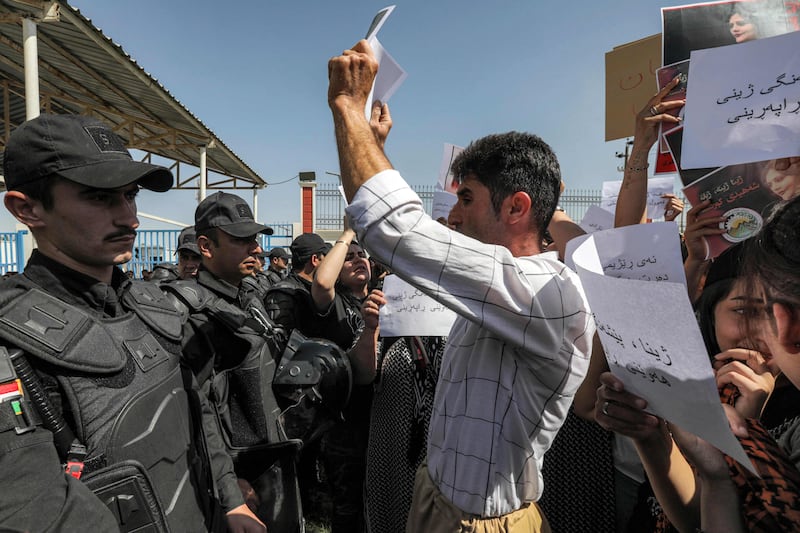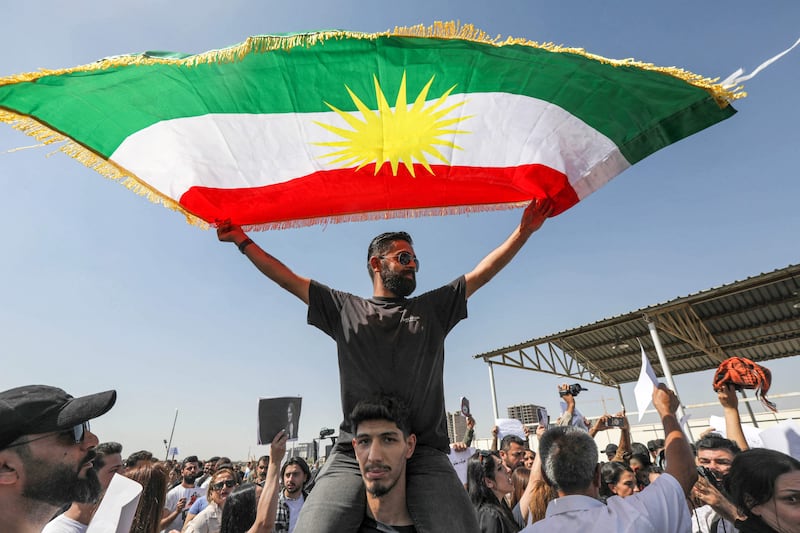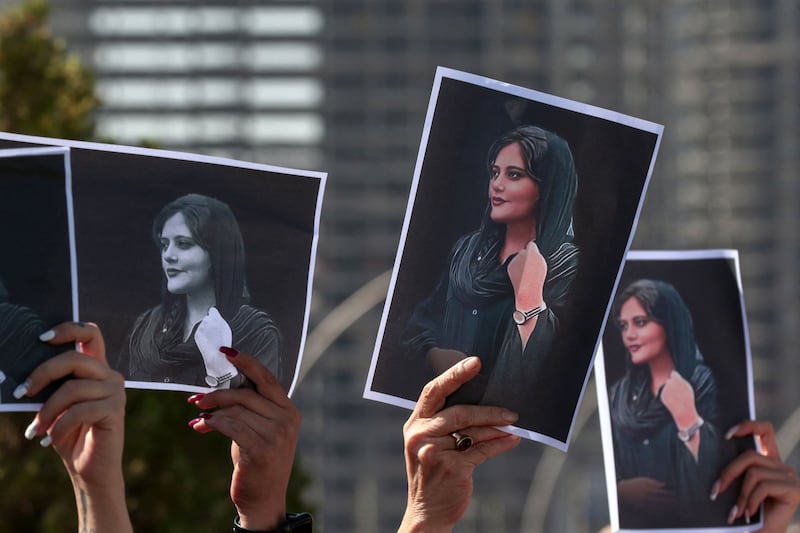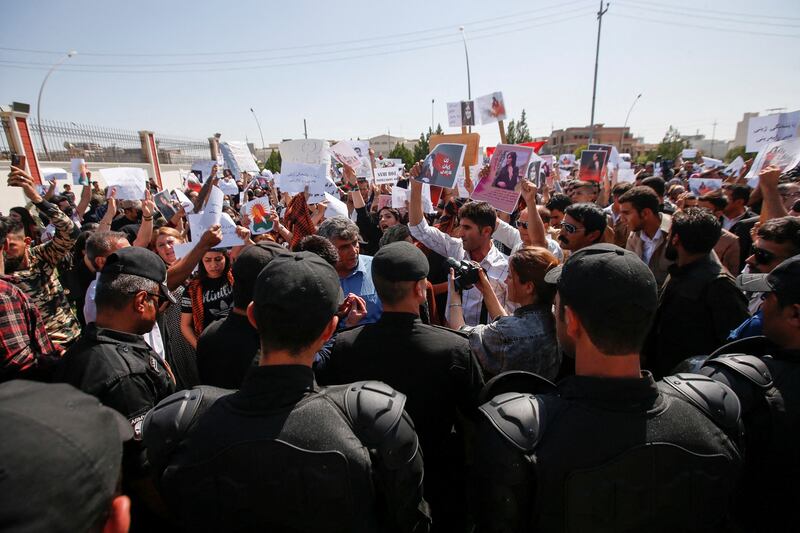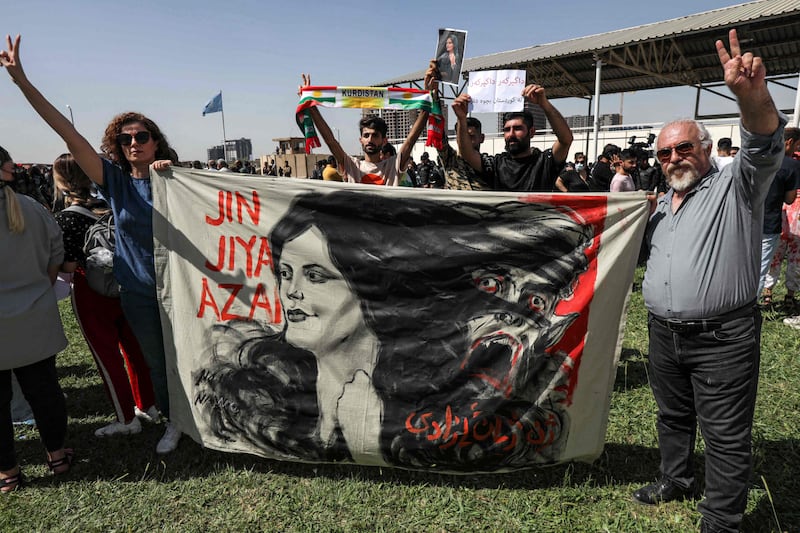Protests in Iran continued for their 10th consecutive night on Sunday over the death of young Kurdish woman Mahsa Amini in the custody of the country's morality police.
Judiciary chief Gholamhossein Mohseni Ejei “emphasised the need for decisive action without leniency” on Sunday against core instigators of the “riots”, the judiciary's Mizan Online website said.
At least 41 people have died since the unrest began, including protesters and members of Iran's security forces, according to an official toll.
Oslo-based Iran Human Rights on Sunday evening said the death toll was at least 57, but said internet blackouts made it increasingly difficult to confirm fatalities as the women-led protests spread to scores of cities.
In the largest protests in Iran in almost three years, security forces fired live rounds and bird shot, rights groups said. Meanwhile, protesters hurled rocks, burnt police cars and set fire to state buildings.
Hundreds of demonstrators, reformist activists and journalists have been arrested during the mostly night-time demonstrations since unrest first broke out after Amini's death was announced on September 16.
Amini, whose Kurdish first name was Jhina, was detained three days before that. She allegedly breached rules that mandate tight-fitting hijab head coverings and which ban, among other things, ripped jeans and brightly coloured clothes.
Iranian state news agency IRNA cited chief prosector Mohammad Karimi saying that 450 people were arrested in Mazandaran, in connection to the protests there.
In Syria's Kurdish-controlled area of Qamishli, women were burning scarves in solidarity with Amini.
US 'trying to weaken Iran’s stability'
Iran's foreign ministry, meanwhile, said on Monday that attempts by the US to violate its sovereignty over the protests would not go unanswered.
"Washington is always trying to weaken Iran’s stability and security, although it has been unsuccessful," foreign ministry spokesman Nasser Kanaani told Nour News, which is affiliated with a top security body.
Iran earlier summoned its British ambassador to protest against the "hostile atmosphere" created by London-based outlets against the government, the ministry said on Sunday.
A "strongly worded note of protest" was conveyed to the British diplomat, Iran said, accusing the London outlets of inciting violent protests in the country.
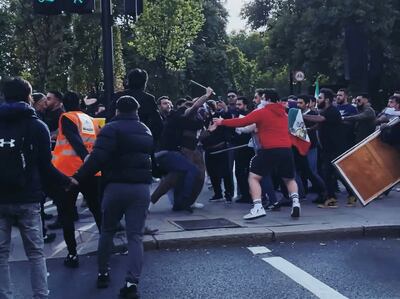
Iran also said it summoned the Norwegian ambassador over that country's "interventionist stance" on the country's internal affairs.
President of Norway's Parliament, Masud Gharahkhani had tweeted in support of Iran's anti-government protesters on Saturday.
"Give a voice to all those who fight with their lives as an effort for the same freedom and democracy we are lucky enough to have in our country Norway," he wrote with the hashtags #IranProtests2022 and #MahsaAmini.
Iranian state media have been framing the protests as a plot by the West to incite "regime change" in Iran — a claim the government has often made against other nations at times of unrest.
State-run outlets also said Amini had fainted at a police station "without any physical contact" by officers.
Iranians in Greece cut off their hair in solidarity with Mahsa Amini
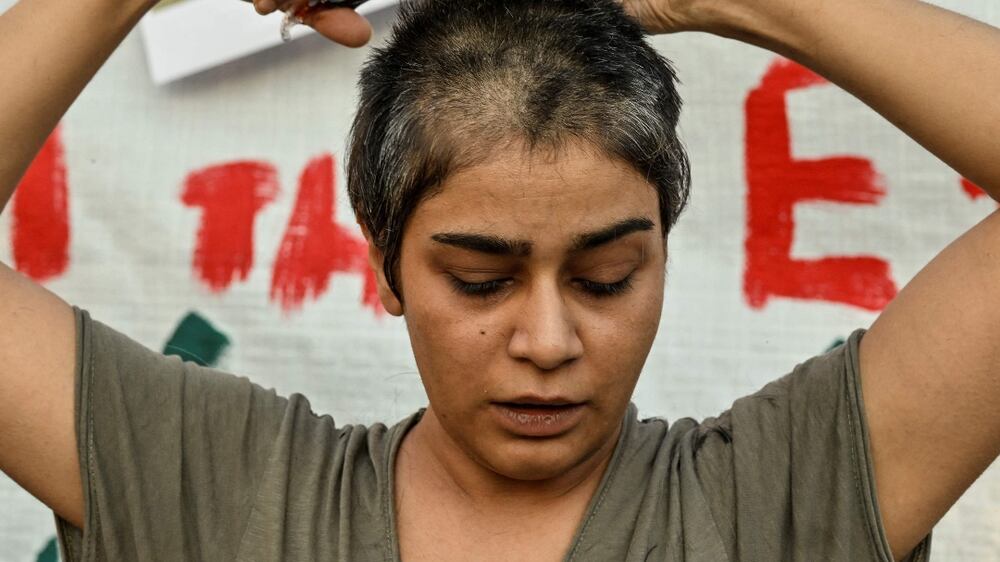
Images circulated by the International Health Regulations showed protesters on the streets of Tehran, shouting “death to the dictator”, purportedly after nightfall on Sunday.
Witnesses told AFP that protests were continuing in several locations. Video footage showed demonstrations in Tabriz and Shiraz, among other places, with women removing their headscarves and protesters shouting against the authorities.
Among the protesters were women who burnt their hijabs and cut off their hair. Some danced near large bonfires to the applause of crowds that chanted “zan, zendegi, azadi”, or “woman, life, freedom”.
Video of demonstrations on Saturday, verified by AFP, showed students ripping down a picture of supreme leader Ayatollah Ali Khamenei outside a university in the northern province of Mazandaran.
Web monitor NetBlocks noted “rolling blackouts” and “widespread internet platform restrictions” on Sunday, with WhatsApp, Instagram and Skype blocked.
This followed older bans on Facebook, Twitter, TikTok and Telegram.
Protests abroad in solidarity with Iranian women have been held in Athens, Berlin, Brussels, Istanbul, Madrid, New York, Atlanta and other cities.
In Paris and London on Sunday, police clashed with demonstrators trying to reach Iran's embassies. French officers fired tear gas. In London, 12 people were arrested and five officers seriously hurt, police said.
EU foreign policy chief Josep Borrell deplored the Iranian security forces' response to the unrest as “disproportionate … unjustifiable and unacceptable”.
